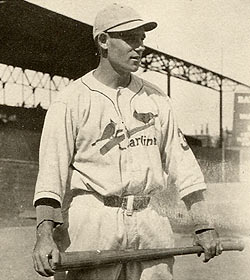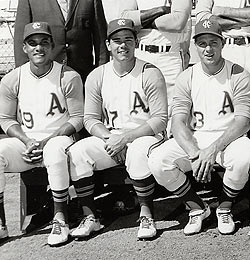Dressed to the Nines: A History of the Baseball Uniform
http://exhibits.baseballhalloffame.org/dressed_to_the_nines/index.htm
When thinking about one of America’s favorite pastimes, and when attending a game in the stadium or watching it at home, many fans of baseball wear their teams jersey to show pride and support .

The main idea of this online virtual exhibit is to educate along with entertain the public who enjoys baseball or wants to know more about America’s favorite pastime and the uniforms that the players wore and how they changed over the years. Many of those who visit this virtual exhibit would be anyone interested in the sport, especially those who visit either in person or online, the National Baseball Hall of Fame, which is the host of this exhibit.
With this exhibit, viewers are able to learn more about the history of the different parts of a baseball players uniform and the background on how they were shaped and manufactured. While many a fan can tell you the main parts of the uniform, with this exhibit, we are shown the history of certain aspects. For example, when learning about the patches and armbands, we are provided a partial list for all memorial markings donned by major league clubs along with a list of commemorative patches worn by major league clubs from 1907 through the 1970s.
While viewing the exhibit, the viewer is able to learn the history of the multiple parts of the baseball uniform, from the numbers to the shoes and stockings, a timeline of baseball uniform history and a database of all uniforms worn by American, National and Federal League franchise teams.

As an integral part of baseball history and fandom, baseball uniforms have changed throughout the years, with input from both the public and inside sources. The changing of uniforms, in some instances, shows the changing of a franchises history.
The main portion of the site is divided up into three main subjects, Parts of the Uniform, Timeline and Uniform Database. In the portion of the online exhibit dedicated to the parts of the uniform, the viewer is shown a diagram of a baseball uniform which each part labelled. Through clicking on the links associated with each part, you are able to learn more about the history of the uniform parts through scrolling through pages. The timeline portion of the site is a linear format through scrolling up and down, while it is also broken down into twenty year chunks. And the final portion, the Uniform Database, is formatted like any other database. By entering the league, city, and range of years, you are able to view a list of results linked to the different uniform variations from throughout the franchise history.

The site is very easy to navigate, with a header and footer that shows the main sections of the site navigation. It is a very basic site map, that even those with minimum skills should be able to navigate around.
There are a few minor improvements that could be made to the functionality of the site itself. For example, when finishing one of the sections, a next button might work or have larger icons for the section tabs for ease of navigation.
The site itself is full of photographs, along with a diagram of the parts of a baseball uniform, newspaper clippings and advertisements, and a linear timeline that has photos attached to it. In the uniform database, certain franchises might just display the diagram of the uniform for a certain year, where as in some instances, you are also given a photographic example from the time period of a player wearing the uniform.
Many of the artifacts that are featured on the virtual exhibit are photographic images or graphic images of baseball players and uniforms. According to the credits page on the site, the uncredited images are from the collection of the National Baseball Hall of Fame and Museum and the additional, as credited in site, are courtesy of the New York Times, Philadelphia Phillies, Library of Congress, Chicago Historical Society, and Topps Company, Inc. Most of the information and the graphics used for the uniform database are courtesy of Marc Okkonen, the author of Baseball Uniforms of the 20th Century.
Almost every single image in the virtual exhibit is captioned with a small descriptor of who and sometimes what is shown in the image, giving a name and year. Depending on what page you are looking at, the ratio of text to images is relatively heavy on the text with the images being supplemental to the information. Throughout the whole site, the background is a dark blue background with white Times New Roman font with bold headings on certain pages.
Madelyn, this is a really cool article! I tend to forget about sports as a part of history, if I’m being completely honest. Everything is well-written and super informative! One suggestion that I have would be to just clean up the ending a little bit to smooth it all out. Great job!